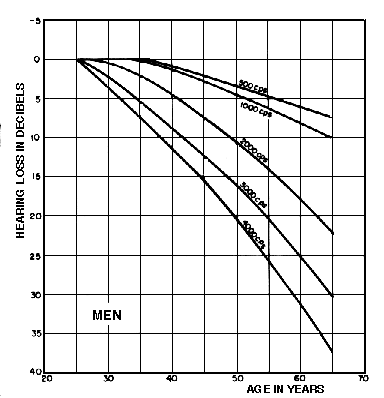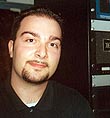|
|
This topic comprises 2 pages: 1 2
|
|
Author
|
Topic: They CAN tell the difference! (when it's done right)
|
Michael Barry
Jedi Master Film Handler

Posts: 584
From: Sydney, NSW, Australia
Registered: Nov 1999
|
 posted 05-14-2001 10:40 AM
posted 05-14-2001 10:40 AM




In response to earlier threads which caused me to wonder whether an audience is capable of perceiving qualitative differences in presentation, I thought I would start a new thread in order to present two recent anecdotes which seem to indicate that they certainly can.The first occured a couple of weeks ago when I was showing a 70MM print of '2001: A Space Odyssey'. There was another projectionist on that shift to run the other five screens while I ran the 70MM one. He told me that a patron had stopped him in the foyer during the intermission and asked if he was the projectionist. He said that he was one of them, and the patron said something to the effect of, 'Let the other projectionist know that the presentation of 2001 is excellent!'. The next day, I was talking to one of the ushers who was on during that same shift and without prompting her, she mentioned that there was a general 'buzz' about the presentation as patrons came out for the intermission. She overheard many of them discussing not only the film, but the high quality of the presentation itself, and some of them stopped to mention it to her. While I did go to some lengths to ensure the timing of the lights/curtains was as good as possible during the overture, etc. (it's a manual booth), I would have to say that the 70MM format must take the majority of the credit for this, because I cannot imagine receiving the same level of positive feedback for a 35MM print of the same movie. The other instance occured earlier tonight. I went to the theatre I work at to see 'The Mummy Returns' with a friend. I built this print on Thursday (the film opened here one week after the US). The onscreen image was extremely bright, sharp and literally free of any visible artifacts. Although not in the industry, he mentioned - within minutes - how pleased he was with the brightness of the image! Later, during the forest/pygmy scene which takes place at night, he once again remarked how wonderful the colors were, and mentioned the rich, powerful reds (the costume worn by one of the villains) and the green of the foliage. (I should also add that I am particularly pleased with this print. It has not shedded one bit and the projector is spotless after each show - there is nothing to clean! Although it has only had about 25 passes on it thus far, it looks the same to me as when I first ran it straight from the lab on Thursday morning, and I predict that it will look pretty much the same weeks from now (I would have said months, but I don't know how long it will remain popular). It is printed on Kodak 2383 Vision stock.) So, these two situations reassured me that quality is perceived and enjoyed in a very real, conscious way. What instances have others experienced which back up the case that patrons can tell the difference? A special mention must go to John Wilson who made the vast majority of this possible. He must take the credit. Without him, (to name but one thing) the auditorium in question probably wouldn't have those wonderful 5K Xebex lamphouses! 
| IP: Logged
|
|
John Pytlak
Film God

Posts: 9987
From: Rochester, NY 14650-1922
Registered: Jan 2000
|
 posted 05-14-2001 11:42 AM
posted 05-14-2001 11:42 AM





Michael:Thank you for your testimonial to "Film Done Right"! Kodak continues to invest many millions of dollars annually to make the quality of film even better and improve presentation quality. To paraphrase our friends at THX: "The audience is listening...and watching."
Splendor of 70mm Part 1
Splendor of 70mm Part 2
Technical Data for Kodak VISION Color Print Film 2383 ------------------
John P. Pytlak, Senior Technical Specialist
Worldwide Technical Services, Entertainment Imaging
Eastman Kodak Company
Research Labs, Building 69, Room 7419
Rochester, New York, 14650-1922 USA
Tel: 716-477-5325 Cell: 716-781-4036 Fax: 716-722-7243
E-Mail: john.pytlak@kodak.com
Web site: http://www.kodak.com/go/motion
| IP: Logged
|
|
|
|
|
|
|
|
|
|
|
|
Bill Langfield
Master Film Handler

Posts: 280
From: Prospect, NSW, Australia
Registered: Apr 2001
|
 posted 05-15-2001 03:30 PM
posted 05-15-2001 03:30 PM





Brad,
I'm sure there is no need to remind people of how sound alignnment is done.Im sure you have several articles on your
site explaining it. I believe the problem relates to the two following examples... PERFECT examples
Trl Pearl Harbor. (got to love ver1 dont you)
Feature Mummy Returns Both are VERY loud.
That said, I like how loud they are.
I'm amazed there have been been no complaints from the audience, Im happy for that, the 'it's too loud' only seem to only come from clueless floor staff, via 2-two way to to projection, which is mainly ignored. Regards Bill.
| IP: Logged
|
|
|
|
Scott Norwood
Film God

Posts: 8146
From: Boston, MA. USA (1774.21 miles northeast of Dallas)
Registered: Jun 99
|
 posted 05-15-2001 04:45 PM
posted 05-15-2001 04:45 PM





It is weird, though, how the "better" sound formats tend to generate more complaints.I've _never_ had a complaint about sound quality or volume when running something in mono (which, of course, I've only done with mono prints or in weird emergency situations). I've gotten a few complaints about volume level when showing films in Dolby A or SR (which, more often than not, were "turn it up"). I've received tons of complaints when showing films in any of the digital formats, almost all of which were "turn it down." Admittedly, most of the mono films I've run have been art or repertory films and all of the digital presentations that I've run have been mainstream "blockbuster" stuff, but it's still interesting to see how digital generates more complaints even on systems which are generally aligned properly. Oddly, I have never heard a complaint about "it's not in digital" when running a mainstream film in a digital-capable theatre in SR (usually because there were no DTS disks or because an SR-D unit had failed).
| IP: Logged
|
|
Brad Miller
Administrator

Posts: 17775
From: Plano, TX (36.2 miles NW of Rockwall)
Registered: May 99
|
 posted 05-15-2001 04:55 PM
posted 05-15-2001 04:55 PM




Bill,Compression in the mixing stage of a soundtrack goes a long way to giving the illusion of "loud". Most trailers are loaded with it. Also, selective eqing of the tracks before they are mixed together on the dubbing stage can make things sound "loud" regardless of the fader setting. The point that I was trying to make though, is that most problems I see in respect to "it's too loud" and projectionists running the fader at a lower setting stem directly from poor EQing. If the sound tech sets the dials and then packs up without tweeking the final result by ear when listening to a lot of different reels that he is familiar with, you need a new sound guy. Some auditoriums based upon their size and acoustics require more or less treble, bass, and various specific frequencies. Just setting the eq "to the reference line" is a guarantee for crappy sound that will end up being played at 5-6 on the fader to avoid ear fatigue. Actually another good way to see if the eqing was done well without listening is to just look at the dials. Anyone who has large differences between adjacent frequencies is obviously just looking at his RTA. So to clarify the point again, you can take the most perfectly mixed film and run it in an auditorium that was not tweeked well and it will still sound like crap (and need to be played at 5-6 on the fader). Getting back to the Mummy Returns, that film has a poorly mixed soundtrack from the start (aka "a loud track"). In comparison, the original Mummy feature's soundtrack was the worst I've ever heard. I think many will agree with me on that one. By the way, Gary Rydstrom is one of my favorite mixers. All of his tracks are top notch! Interesting side note: Does anyone else get a laugh out of that occasional sound tech who comes into a theater to EQ an auditorium, yet seems to be about 100 years old and can't hear worth a flip in day to day life? (They are always easy to spot, for they speak VERY LOUDLY and never seem to understand anything you say to them. Another tip is a tech who just gets "too close" and invades your personal space in an attempt to get closer to your mouth to hear what you are saying.) I actually was at a theater when one of "those guys" stuck his head out of the port window for about 20 seconds after EQing the auditorium and said "that's the best sound I've ever heard". He was basing that judgment on not only 20 seconds of audio, but from the port window with the projector clattering away right beside him and as if that wasn't bad enough, it was a trailer he was listening to as a reference. His end result sound was very shrill, had no low end, was incredibly dull in the upper frequencies and got us a LOT of customer complaints. He probably couldn't even hear above 5k anyway, so maybe it DID sound great to him.  Check out this chart of hearing loss in amplitude vs. audio frequency. Note how severely the upper frequencies are lost as the average man ages.  Just look at that chart. By the time the average man hits 60 years of age, his hearing at only 4000hz is lost 30 decibels! A frequency like 8000hz or even 10,000hz is off the chart. Add to that the all-too-common remark I hear from the senior sound techs of "bass scares people" (so they roll off all the low frequencies) and you've got yourself one hell of an extremely harsh and shrill sound system that must commonly be played at "5" on the fader to prevent from killing everyone else's hearing. This certainly should be taken into effect and I have always been amazed that most people (including THX!) toss this fact aside. Disclaimer: No offense intended to any of the older techs. I'm talking about the ones who have lost a huge chunk of their hearing due to age or another cause, yet still align sound systems. There really should be a detailed hearing test performed as a requirement before a tech is allowed to alter a sound system. If someone who is 60 can still pass the test with flying colors, then by all means break out the RTA. If someone at 30 can not, he should not be touching sound systems. My only point here is that hearing loss from age alone is a proven fact of life and should be tested. Unfortunately, this is not the case and these are the same techs that when listening to a defective print (or misaligned reader) in the SDDS format, simply can not hear the switching back and forth between SDDS' primary digital tracks to SDDS' backup (and lower quality) digital tracks. Some techs can't even tell when the digital on any system defaults to analog and will argue the point until hell freezes over that there is no problem...and these guys are actually tuning sound systems. Perhaps THX will consider making a comprehensive hearing test every few years a requirement. It is very much needed.
| IP: Logged
|
|
|
|
Joe Redifer
You need a beating today

Posts: 12859
From: Denver, Colorado
Registered: May 99
|
 posted 05-15-2001 06:52 PM
posted 05-15-2001 06:52 PM





Oh man I can't begin to stress how much EQ effects sound complaints. Here is a prime example:When Star Wars Episode 1 came out, Lucasfilm required that a projectionist (and only a projectionist) watch each print and verify quality (Kudos to Lucasfilm for doing that, by the way). The print I watched sounded very good. But another projectionist had to turn his auditorium (in the same complex) down to about 4.2 on the volume fader. And this was a guy who loved things LOUD. He started his print after mine, so I got a chance to listen to it. It was very shrill and harsh sounding. Now I don't have an RTA, but I do have a good SPL meter. So I reset the levels (they weren't very far off at all, actually). And then I proceeded to adjust the EQ of each channel BY EAR until it sounded good, using the auditorium I had just watched the same movie in as a reference (one had a CP500 and the other a CP65). This took awhile and required a lot of trial and error. After that I reset the SPL levels again. The movie opened to a wild bunch of Star Wars fanatics and the volume played at 7.6 for a week, and then dropped down to 7.2 as the crowd shrunk. The guy who originally watched the movie in here at a volume level of 4.2 was amazed at the difference. I was complimented three times by random customers for having the best sounding auditorium in the state. They were all from the #1 auditorium (the one which I adjusted). I thought that the #16 auditorium (the one where I watched my print) sounded perhaps a bit better, but it just goes to show that EQ is VERY important!
| IP: Logged
|
|
Bill Langfield
Master Film Handler

Posts: 280
From: Prospect, NSW, Australia
Registered: Apr 2001
|
 posted 05-15-2001 11:54 PM
posted 05-15-2001 11:54 PM





Brad,
You are correct in everything you say in massive message. With Mummy2, yes it is simply loud and not at all mixed well.
However I feel Pearl Harbor trailer A is
EXTREMELY well mixed, with fantasic range.
Even though scope trailers can bee a pain in
to run, everyone makes an effort to reprogam
automation to screen it. I get a chill
That trailer gives me a me 'chill'? everytime imannage to get out and watch it.
Version B, is almost as good, Version C, is well a mess, I dont know what they were thinking. I like your graph, I think I proberly can't hear past 12k 
Although my mind says I can hear all the way to the top of 20k. I have pilot's licence
and had the doctor check my hearing twice and she said it was fine, however, young children (my three nephews) can hear a high freq squeal come from computer montiors when they turned on, that I can not hear)
PS I love sub-bass, that was the channel ever
invented, will work well in Pearl Harbor.Joe, nothing wrong with the sound in Ep1.
But I hated the movie itself.
Ep4 so far is the best.
Hopefully Ep2 WONT have opera music blasting away during sabre sword fights. Bill.
| IP: Logged
|
|
|
|
|
|
All times are Central (GMT -6:00)
|
This topic comprises 2 pages: 1 2
|
Powered by Infopop Corporation
UBB.classicTM
6.3.1.2
The Film-Tech Forums are designed for various members related to the cinema industry to express their opinions, viewpoints and testimonials on various products, services and events based upon speculation, personal knowledge and factual information through use, therefore all views represented here allow no liability upon the publishers of this web site and the owners of said views assume no liability for any ill will resulting from these postings. The posts made here are for educational as well as entertainment purposes and as such anyone viewing this portion of the website must accept these views as statements of the author of that opinion
and agrees to release the authors from any and all liability.
|

 Home
Home
 Products
Products
 Store
Store
 Forum
Forum
 Warehouse
Warehouse
 Contact Us
Contact Us




 Printer-friendly view of this topic
Printer-friendly view of this topic









 The good thing with the CP 65 is that you can mess with the levels until you personally are satisfied with the whole sound. THE EAR always gives better results rather than reading instruments (osciloscope e.t.c). I strongly believe this because two or three months ago the film got stuck on the projector and the sollar cell was completely dispositioned. Our company could not afford for a Dolby Engineer to come down and I personally reallinged the sollar cell with no instruments, and just my ear. And when we do a changeover when playing a non digital film, my boss can always tell the diference whether is the first projector which is playing or the second. (I realligned the second projector). And always I hear that the second projector "sounds" much better. What do everyone think?
The good thing with the CP 65 is that you can mess with the levels until you personally are satisfied with the whole sound. THE EAR always gives better results rather than reading instruments (osciloscope e.t.c). I strongly believe this because two or three months ago the film got stuck on the projector and the sollar cell was completely dispositioned. Our company could not afford for a Dolby Engineer to come down and I personally reallinged the sollar cell with no instruments, and just my ear. And when we do a changeover when playing a non digital film, my boss can always tell the diference whether is the first projector which is playing or the second. (I realligned the second projector). And always I hear that the second projector "sounds" much better. What do everyone think?














